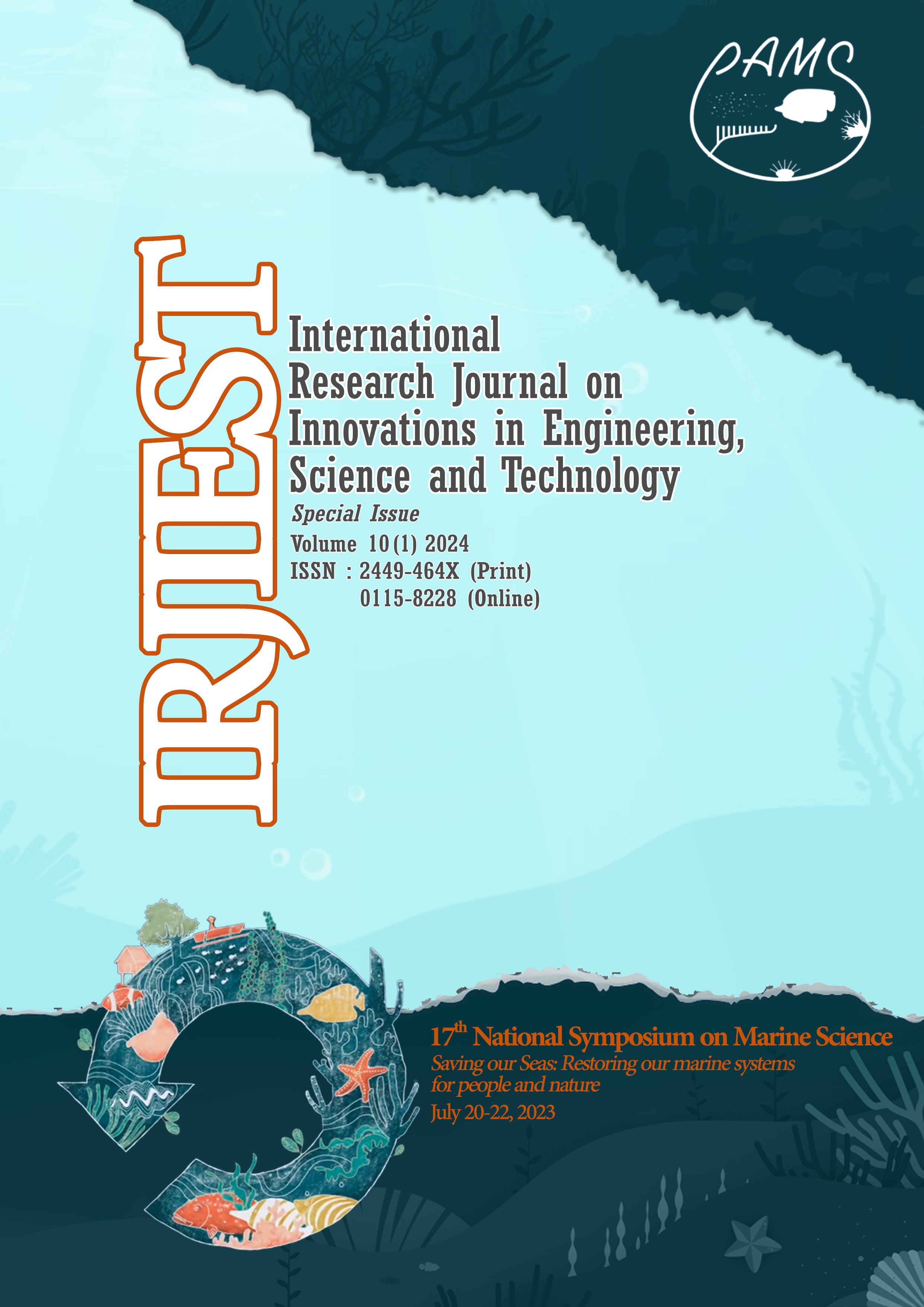Bioindicator potential of marine macrophytes: Assessing seaweed communities in an urbanized coastal system
Keywords:
abundance, bioindicator, diversity, dominant species, seaweedsAbstract
Seaweeds are one of the known bioindicators for determining the possible effects of anthropogenic inputs on the marine environment. With the presence of power plants, resorts, and households, the coastal areas of Brgy. Ilijan in Batangas City is changing due to industrialization and urbanization. Thus, this study was conducted to determine the composition, abundance, dominance, and species diversity of the seaweeds community in Brgy. Ilijan, Batangas City, using the line transect-quadrat method. There were seven species identified in the area, namely, Dictyota dichotoma, Tricleocarpa fragilis, Amphiroa foliacea, Padina sp., Neomeris vanbosseae, Halimeda opuntia, and Caulerpa lentillifera. Two species are possible bioindicators, such as D. dichotoma and Padina sp. The line transect near the powerplant and resorts recorded 64.88% cover for D. dichotoma, while the line transect near the residential area had a 35.63% cover of D. dichotoma. Lastly, the line transect near the run-offs, Padina sp. recorded a cover of 52.88%. D. dichotoma and Padina sp. were the dominant species in the area, having a total distribution of 60.6%. In addition, the area had a moderate marine macrophyte diversity. The potentiality of these species to be bioindicators in the area should be further explored, and thus, the need for continuous monitoring of these species in the area.
Downloads
Published
How to Cite
Issue
Section
License
Copyright (c) 2025 International Research Journal on Innovations in Engineering, Science and Technology

This work is licensed under a Creative Commons Attribution-NonCommercial-NoDerivatives 4.0 International License.

